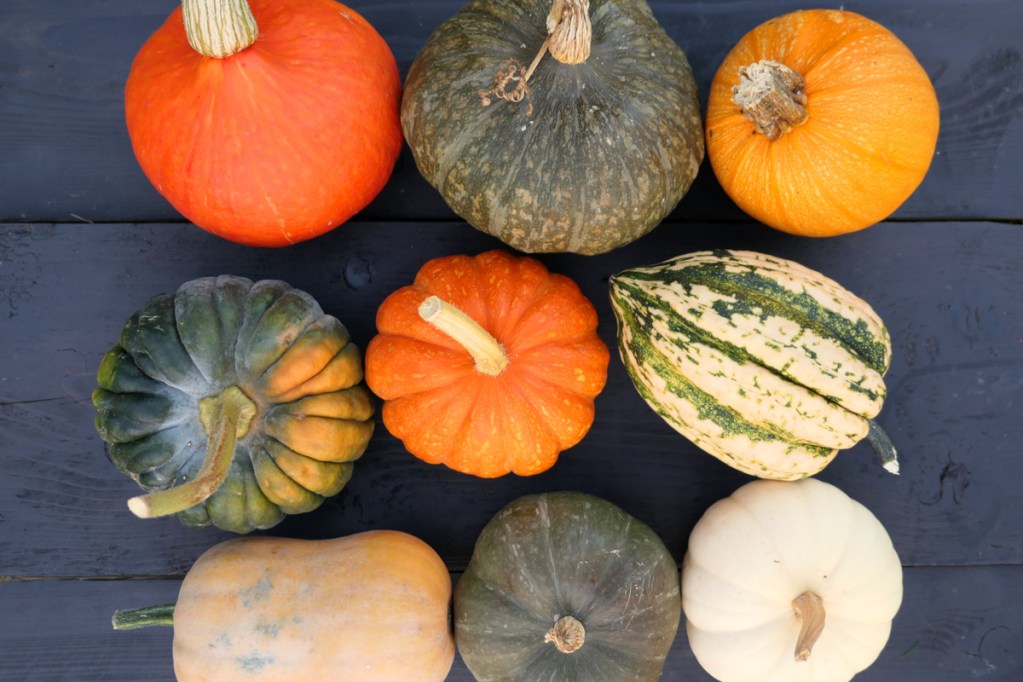
From delicious pumpkin pie to savory grilled zucchini, the squash family has something for everyone. It’s no wonder so many gardeners want to add them to their gardens! In addition to being delicious, squash are easy to grow vegetables, and they come in so many different varieties you’re almost guaranteed to find one that fits your gardening style.
The problem is that squash take up a lot of room. The vines will grow over anything, potentially even your other plants, and tend to climb out of their beds into the yard, walkways, or whatever else is in their path. The solution to this? Grow them vertically! If you’ve never tried growing squash vertically, this simple guide will help get you started.
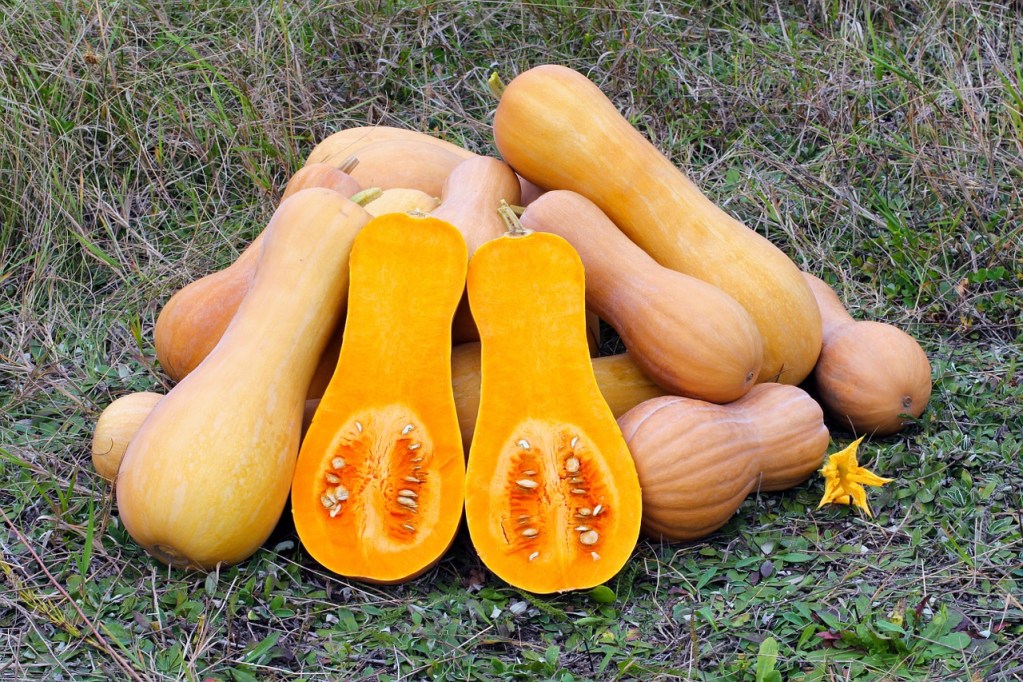
Does squash need a trellis?
Squash does not need a trellis, but it does enjoy one. Squash will grow on a fence, in a raised bed, flat on the ground, or anywhere else it is allowed to wander. Providing a trellis helps to keep your squash in the area you want it to be in. In addition to that, it protects your plants from animals, reduces disease, increases the amount of harvestable squash, produces cleaner fruit, and has a neater appearance.
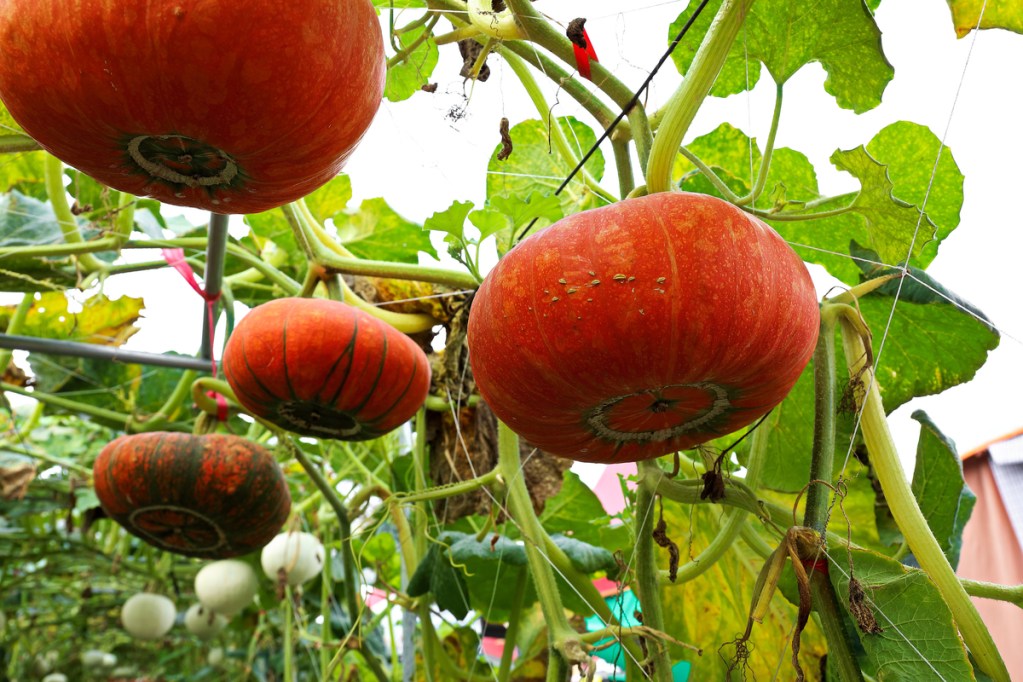
Do squash plants climb?
Squash plants do indeed climb. While they will sprawl across flat ground willingly enough, they will climb anything tall that is within reach of their vines. Sometimes this tall thing is a fence; sometimes it is the stake for the tomatoes next to them. When you plant squash, keep an eye on it to make sure it hasn’t started climbing anything it isn’t supposed to climb. Moving anything you don’t want them to climb away from your planting site may also be helpful.
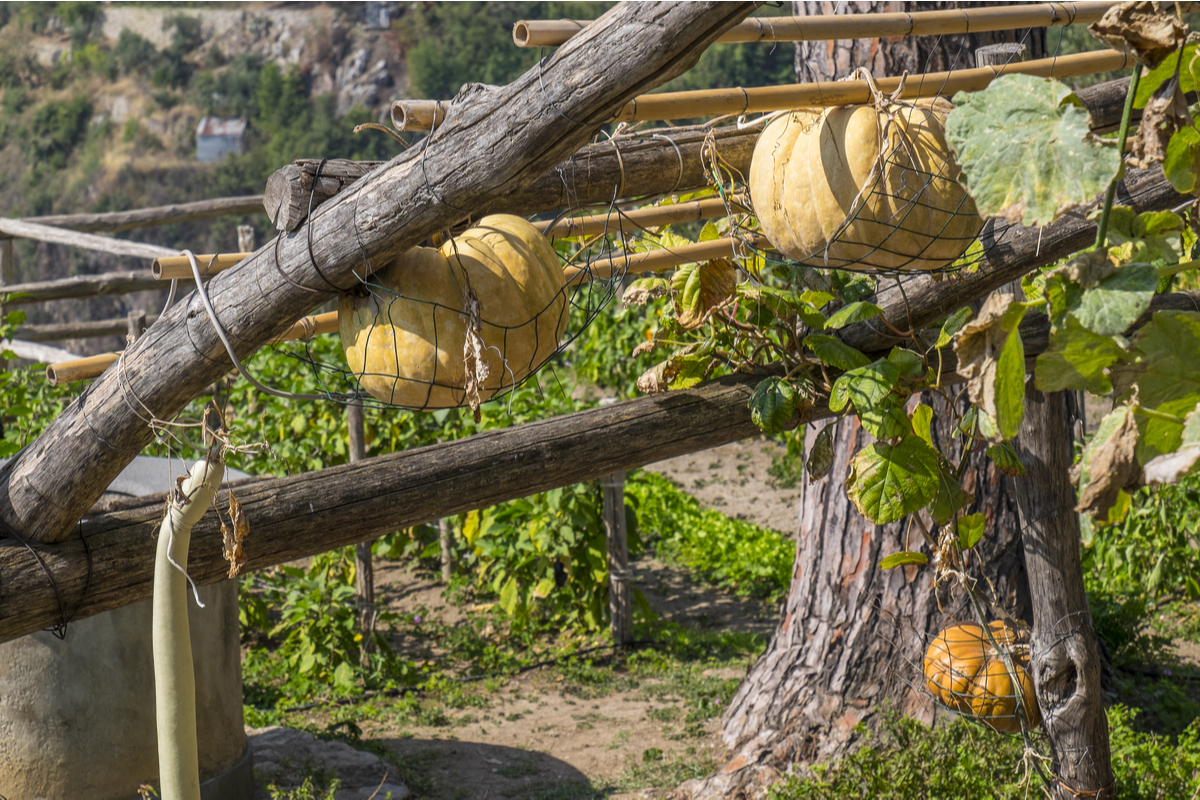
What vegetables can grow vertically?
Growing plants in vertical gardens is becoming increasingly popular. Any plant that grows on a vine can grow vertically. Squash and gourds are known for trellising, as are tomatoes and cucumbers. Peas and beans also grow very well vertically. Although they aren’t vegetables, you can also grow strawberries, raspberries, blackberries, and melons on a trellis.
Vegetables that grow on bushes or stalks will not grow on a trellis and do not grow well in other types of vertical gardening. Vining plants that produce heavier fruits will grow on a trellis, but the fruits may fall if they aren’t supported. If the fruits weigh 10 pounds or more, like larger pumpkins or watermelons, you need to make a sling of some sort to support them. A little bit of fabric secured under the trellis to catch the fruit if it falls will do just fine.
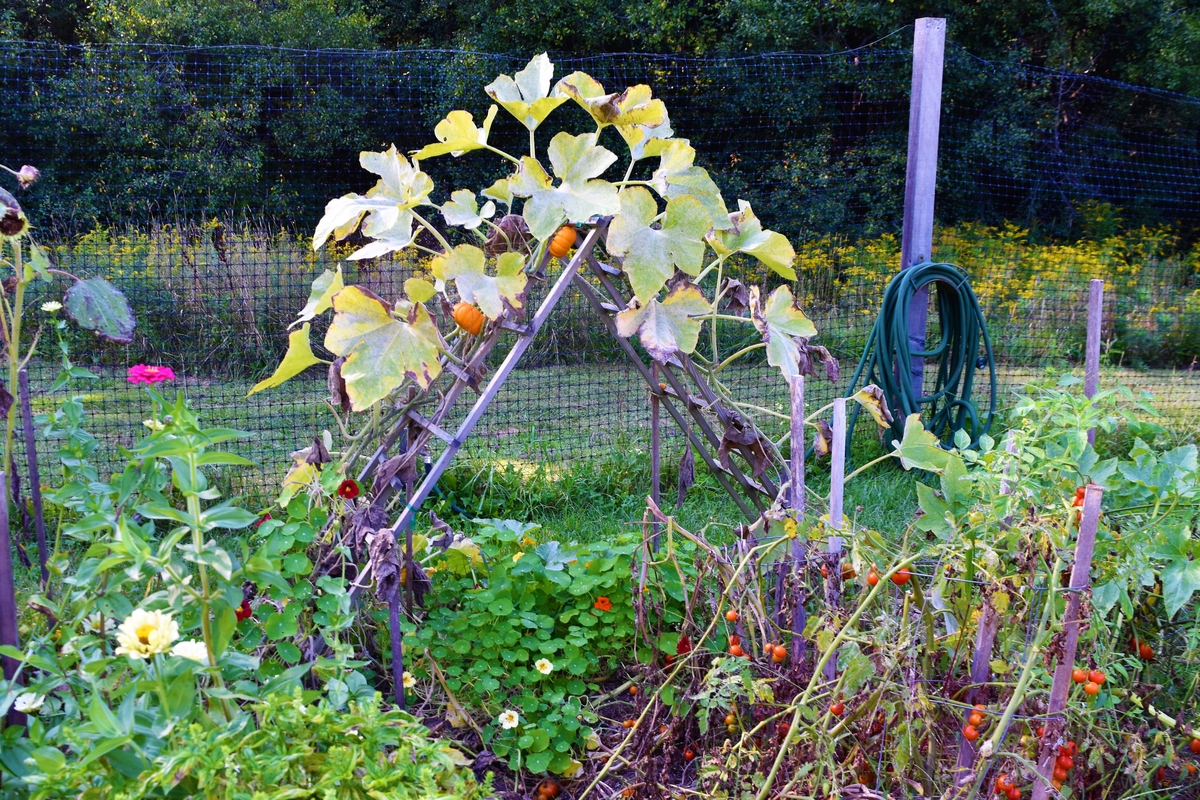
How do you trellis cucumbers and squash?
The first step is to decide what type of trellis is best for you and where it will go. You can make your own trellis or buy a pre-made one. There are a variety of shapes and materials available. Vertical walls take up less room, but your squash may require extra support. A-frames take up a little more room, but they are the most stable and look very classy. Your trellis can be wood or plastic, but if it’s wood, make sure it is weather-resistant.
Once you have your trellis set up, plant your vegetable of choice at the base. When it starts putting out vines, gently wrap and weave the vines loosely into the trellis. This ensures that they will grow up the trellis. Tie the vines loosely to the trellis using garden twine for extra support. The vines will put out tendrils, thinner vines from the side of the main vine, and these tendrils will wrap around the trellis, supporting the vine further.
Your squash needs plenty of sun, whether it is growing on a trellis or not, but there is one main difference between caring for squash on a trellis and squash on the ground. Squash needs moisture, and when it grows on the ground its leaves shelter the ground, helping the soil retain water for longer.
When growing squash on a trellis, the soil beneath them dries out faster. This means you’ll need to water your squash more frequently and keep a close watch on the soil. On the other hand, if you live somewhere that has frequent rains, which may normally cause squash to rot on the ground, a trellis may be the perfect solution for you.
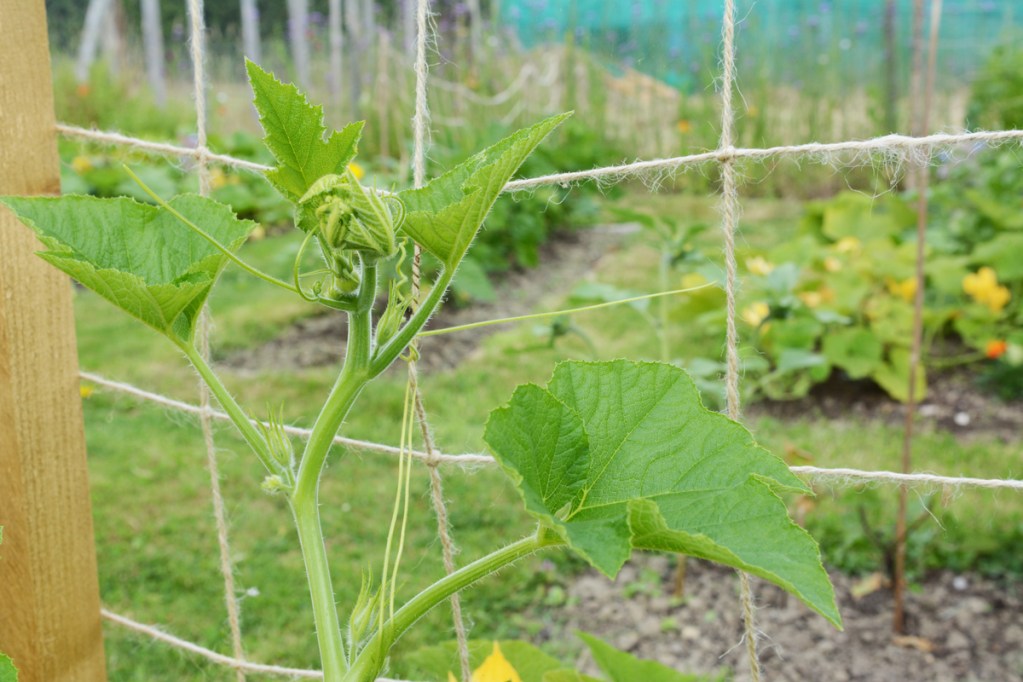
What are the best types of squash for vertical growing?
While any squash can be grown vertically with the proper preparation and support, some are easier to grow on trellises than others. Smaller squash such as cucumbers, zucchini, acorn squash, mini pumpkins, cucamelons, and butternut squash are ideal for trellises and vertical gardens. Their smaller and lighter fruits are less likely to drop off the vine and rarely need the extra support that heavier squash do. Additionally, smaller varieties often have thinner skins that are more easily damaged by pests and the weather. Getting them off the ground offers extra protection that some larger varieties may not need. So if you plan on growing multiple types of squash, opt for growing the smaller ones on your trellis!
Gardening with a trellis provides many benefits, whether you’re growing fruits, vegetables, or flowers. They’re aesthetically pleasing and versatile, making them a good fit in any garden space. Since they’re off the ground, fruits are less vulnerable to diseases and pests and are generally cleaner than fruits grown on the ground. Harvesting from a trellis is easier, and you often end up with a heartier yield than other growing methods. Ultimately, whether you get or make a trellis for your garden is up to you, but now you have all the information necessary for that decision.
Editors' Recommendations
- The best (and worst) garlic companion plants
- The best (and worst) broccoli companion plants
- How to grow morel mushrooms at home and save yourself tons of money
- The best (and worst) zucchini companion plants
- Grow these 6 unique companion plants for raspberries in your garden




